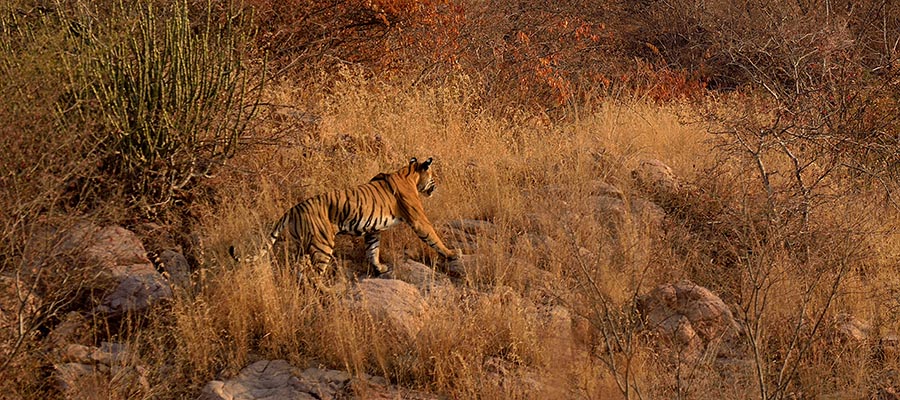Ranthambore National Park, a renowned wildlife sanctuary in the Sawai Madhopur district of Rajasthan, is one of the best places in India to spot the majestic Bengal tiger. The expansive park is segmented into multiple safari areas, each providing distinct scenery and opportunities to observe wildlife. Among these, certain zones have earned a reputation for frequent and thrilling tiger sightings, attracting wildlife enthusiasts and photographers from around the world. Understanding which safari zones offer the best chances of spotting tigers can significantly enhance your safari experience in Ranthambore. Explore the top safari zones in Ranthambore National Park where tiger sightings are most prevalent, delving into the characteristics of each zone, the best times to visit and tips for maximizing your chances of encountering these elusive big cats in their natural habitat.
An Acquaintance with Ranthambore’s Safari Zones
Zone 1
Zone 1 is one of the most popular zones for tiger sightings in Ranthambore National Park. This area is home to several well-known tigers, T-39 and T-57, including T-39 (Noor) and her cubs. The landscape of Zone 1 is a mix of dense forest and open grasslands, which makes it ideal for spotting tigers.
Zone 2
Zone 2 is another hotspot for tiger sightings and is known for its diverse terrain, including water bodies, dense forest patches, and open grasslands. This zone is home to several famous tigers like T19, T22, T72, T57, T28, T60 and T39. Key areas within Zone 2, such as Jogi Mahal, Phuta Kot, and the Nal Ghati, are renowned for frequent tiger activity. The presence of natural water sources attracts tigers, especially during the hotter months, increasing the chances of sightings. The rugged terrain and scenic beauty of Zone 2 also offer a thrilling and picturesque safari experience.
Zone 3
Zone 3 is perhaps the most scenic in Ranthambore National Park. It is home to the famous Padam Talao, Rajbagh Talao, and Malik Talao, which are key watering holes for the park’s wildlife. This zone is often associated with the legendary tigress Machli (T-16), whose territory included the lakes. Currently, tigers like T-19, T-28, T-84, and T-85 are frequently sighted here. The beautiful backdrop of the lakes combined with the high likelihood of tiger sightings makes Zone 3 a must-visit.
Zone 4
Zone 4 is another excellent zone for spotting tigers, offering a mix of dense forests and open valleys. It is home to tigers such as T-28, T-64, T-19, T-75, T-41 and T-25. The key areas within this zone, like Lakkarda, Adidaant, and Semli, are often visited by tigers. The strategic location of Zone 4, with multiple water sources and abundant prey, ensures regular tiger sightings. This zone’s accessibility and scenic routes make it a popular choice for tourists.
Zone 5
Zone 5, while sometimes overlooked, is a fantastic zone for tiger sightings. It is home to well-known tigers such as T-25, T-28, T-17, T-74 and T-75. The zone’s key spots, including Singhdwar, Jokha, and Bakola, are known for frequent tiger activity. The varied landscape of Zone 5, with its dense forests and open areas, provides an excellent habitat for tigers and other wildlife. This zone often offers a quieter safari experience, with fewer vehicles and more chances for peaceful wildlife ncounters.
Zone 6 to 10 – The Emerging Zones
While Zones 6 to 10 are relatively newer and less frequented, they are quickly gaining popularity for tiger sightings. These zones offer pristine landscapes and are less crowded compared to the core zones. These areas are home to several tigers, including T-8 (Ladli) and her cubs. The natural beauty and serenity of these zones provide a unique and peaceful safari experience, with increasing reports of tiger sightings making them worth considering.
